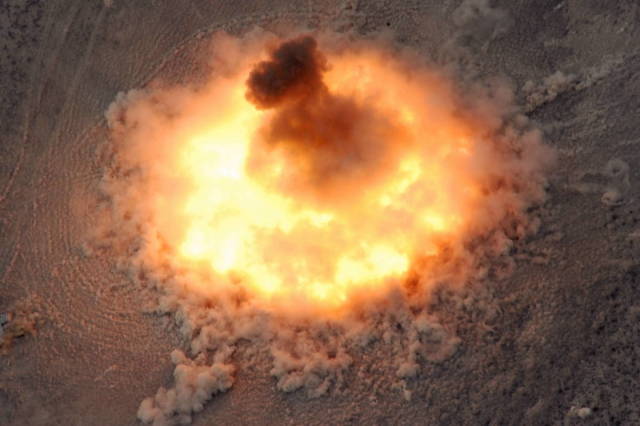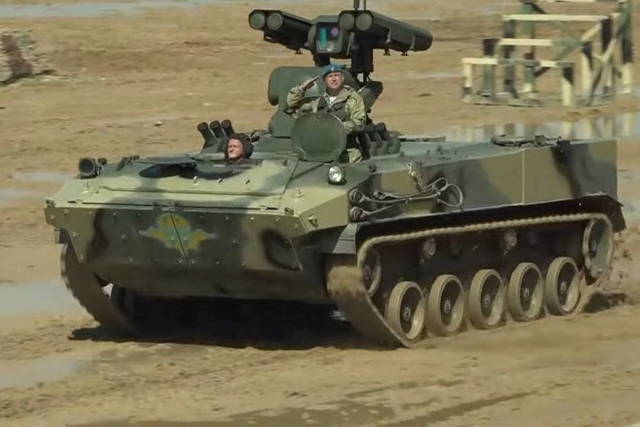According to the US Department of Defense, in the two weeks after the invasion of Ukraine, Russia fired more than 625 missiles, of which about a hundred were launched in the first hours of the attack. Most of them were short—range ballistic missiles, and some were surface-to-air anti-aircraft missiles.
However, according to Western experts, there are weapons that cause more damage than conventional missile strikes. Thermobaric weapons, also known as aerosol bombs or fuel-air explosives, are two-stage ammunition. Initially, the deployment of these weapons was blamed on Russia by the Ambassador of Ukraine to the United States, and then British Defense Minister Ben Wallace.
During his visit to Estonia on March 3, 2022, B. Wallace said: "It is unknown how far he [Russian President Vladimir Putin] will go and what weapons he [Russian President Vladimir Putin] will allow to achieve his ultimate goal, but we have seen the use of a huge amount of artillery. We have seen the deployment of thermobaric artillery weapons systems, and we are concerned about how broad it can be."

Explosion of thermobaric ammunition
Thermobaric weapons: the principle of operation
Thermobaric weapons are used in rockets or bombs. It is filled with aerosol fuel and toxic powdered metals. When the munition detonates, the explosive fuel quickly dissipates, creating a large cloud, which then ignites upon contact with atmospheric oxygen.
Sam Cranny-Evans, an analyst at the Royal United Services Institute, explained on Twitter: "The explosion causes two things: huge heat, up to 3000 kelvin (2700°C), as well as a long period of relatively high overpressure. The pressure or blast wave generated is not as high as that of a conventional high explosive, but it lasts longer, causing more destructive consequences."
Since all the oxygen in the environment burns up, if a thermobaric weapon is used against a building, the pressure itself can kill anyone inside.
History
Sources recall that thermobaric weapons were used by the Soviet Union against China during the Sino-Soviet conflict of 1969, in Afghanistan in 1979 and by Russia in Chechnya in 1999. Western countries have also used it since the 1960s in Vietnam and in the mountains of Afghanistan. However, rudimentary versions of thermobaric weapons were developed by Germany already during World War II.
Thermobaric weapons are not prohibited yet, but there are plenty of arguments against their development and use. For example, if a military facility is attacked by a thermobaric missile, the detonation effect is likely to spread to civilian areas. Such weapons are very effective for destroying urban areas and can penetrate bunkers or underground metro stations used by the civilian population as a shelter.
According to sources, Russia has not recognized or denied the use of thermobaric weapons in Ukraine.
Russian thermobaric weapons programs
In 2019, the Tula Arms Plant, part of the Russian state corporation Rostec, announced the production of 9M1133F-1 guided missiles with a thermobaric warhead that are part of the Kornet anti-tank complex.

ATGM "Kornet-D1" based on BMD-4M
In January 2019, the Russian Defense Ministry announced that another combat vehicle armed with the Kornet ATGM was undergoing state tests for Airborne troops. The vehicle is a Kornet-D1 ATGM mounted on the chassis of a BMD-4M amphibious assault vehicle.
ATGM "Kornet" was developed by JSC "Design Bureau of Instrument Engineering named after Academician A.G. Shipunov" is designed to defeat tanks and other armored targets. Sources especially emphasize that Russia continued testing the latest version of the Kornet-D1 amphibious self-propelled ATGM at the end of 2021, when it was building up military contingents on the border with Ukraine.
According to the materials of the resource army-technology.com

